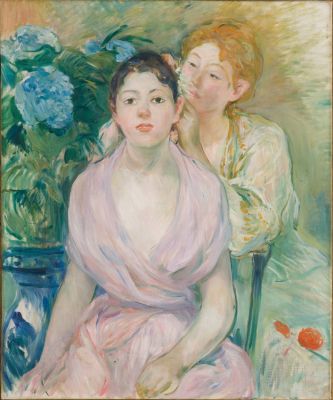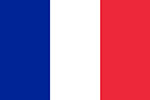Another famous Saint-Quay-Portrieux artist: Berthe Morisot (1841-1895)
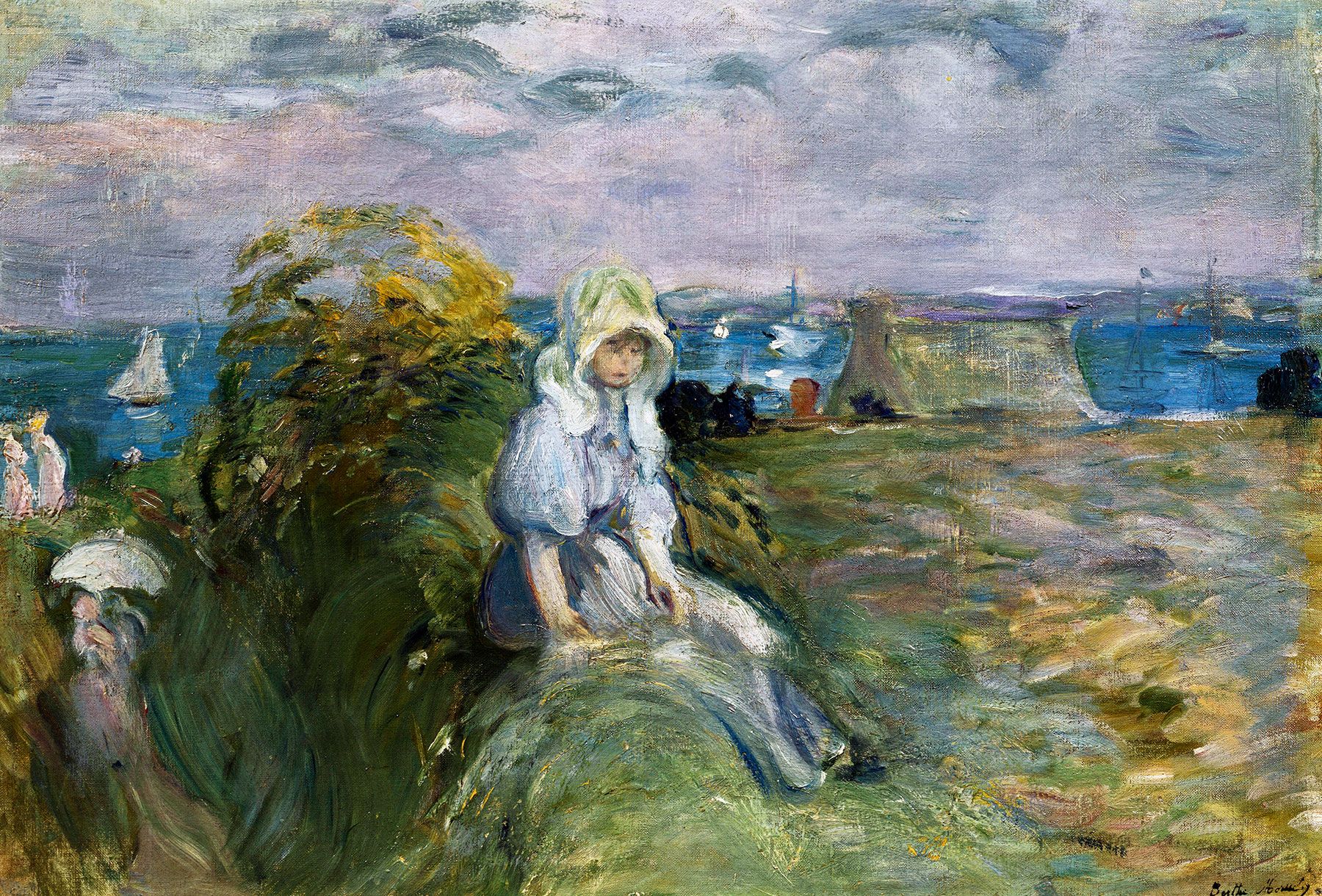
Sur la falaise au Portrieux – Berthe Morisot – © Bridgeman Images
Berthe Morisot, the rebel
Berthe Morisot was born into a bourgeois family. She and her sister received an education that emphasized their artistic sensibility.
As their drawing teacher put it to their parents: “With natures like your daughters’, these are not little talents for pleasure […] they will become painters”. However, the door to the Beaux-Arts was closed to them because of their gender.
At the time, it was unseemly for a woman to work as an artist, but Berthe was determined to pursue her path and fight to exist as a painter.

Berthe Morisot au bouquet de violettes – Edouard Manet – 1872 – Musée d’Orsay.
At the age of 23, she didn’t hesitate to challenge her reputation by agreeing to pose for Edouard Manet, and began artistic and friendly relationships with painters such as Renoir, Degas, Bazille, Monet, Pissarro and Sisley, who were in search of modernity. Camille Corot introduced him to plein-air painting and color.
With perseverance and hard work, Berthe Morisot gradually gained her independence. Recognized by the jury, she was entered in the 1865 Salon des Impressionistes and won the admiration of her peers.
When she married Eugène Manet, Edouard’s brother, in 1874, she had to reconcile family life with her life as an artist. Although married, she signed her works with her maiden name and devoted her life to painting.
Their daughter Julie, born in 1878, married Ernest Rouart, son of painter Henri Rouart, in 1900, and grew up in the artistic circle of her mother’s relatives and friends, including Edouard Manet, Degas, Mallarmé and Renoir. She was a major influence in the defense of Impressionist painters, particularly her mother Berthe Morisot, whom she and her husband helped to promote.
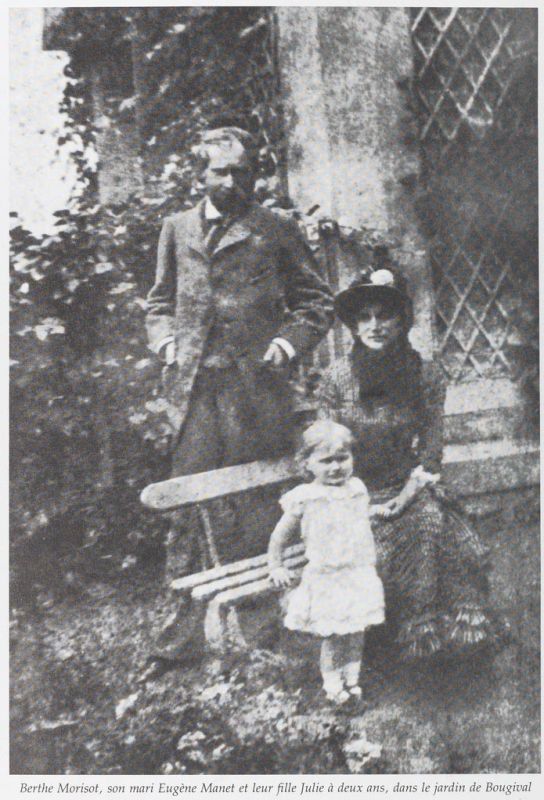
Berthe Morisot at Portrieux in 1894
In a letter to her friend, the poet Stéphane Mallarmé, Berthe Morisot explains her decision to spend her vacations in Brittany: “We decided to go to Brittany just by looking at the little posters in the waiting room at the Saint-Lazare station… My nieces are with me; we walk along the shore, in the open country, and everything would be charming if the place weren’t pretty, inviting me to paint it.” (Mallarmé and Berthe Morisot, Correspondance, 1876-1895).
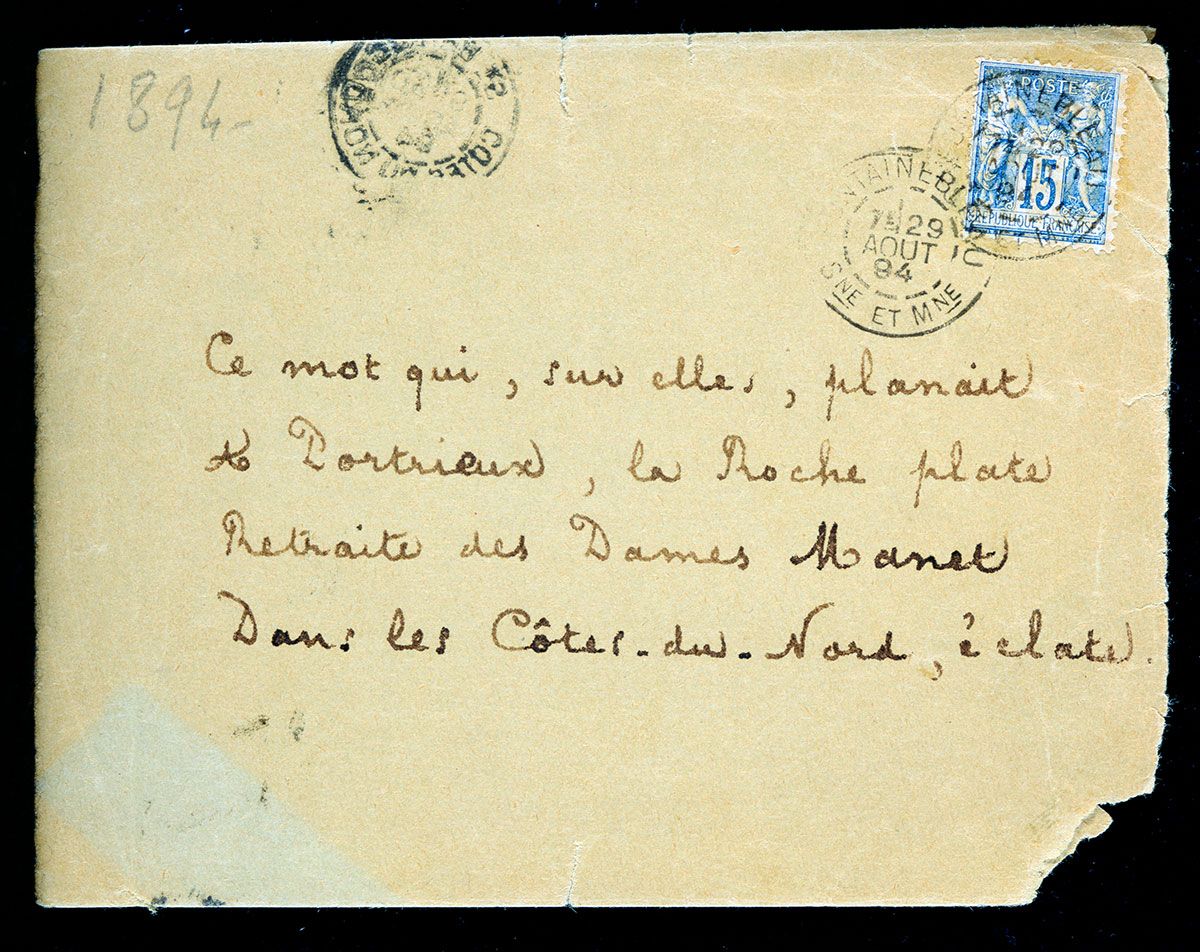
Le quatrain de Mallarmé – © Bridgeman images.
We have a detailed report of this vacation, thanks to the diary of Berthe Morisot’s daughter, Julie Manet (Journal de Julie Manet 1893-1899 mercure de France).
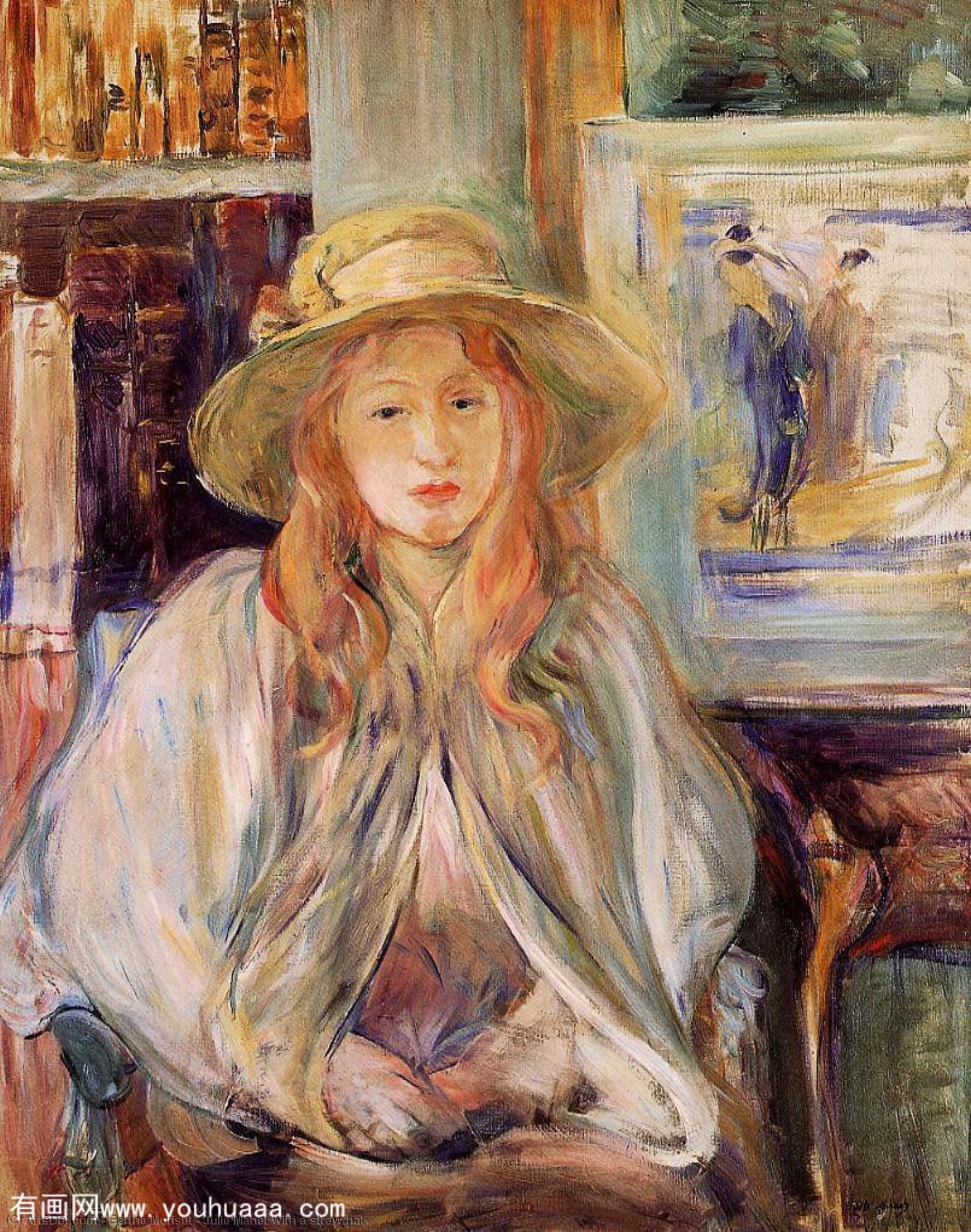
Julie Manet au chapeau de paille – Berthe Morisot – 1892 (collection privée)
After a long train journey to Saint-Brieuc, Berthe Morisot, her daughter Julie and her dog Laïta, and her nieces Paule and Jeannie, took the coach and arrived in Portrieux in the early hours of August 9, 1894, where they stayed until September 15, 1894.
They explored the surrounding area on their many walks: “We marveled at this Breton landscape, it reminded me of Nice”.
August 16: “It’s really lovely to have the sea behind the wheat, fields of all kinds, houses”.
September 2: “An Icelandic arrived yesterday in the fog […] all the bonnets are on the jetty, they are moving, they are hurrying […] This big boat is moving forward, it is becoming big on the sea. […]it becomes beautiful, magnificent, night falls little by little, Icelandic sailors sing a song of joy and return. […] on the jetty, calm women are lined up with their children[…].
September 8: “We’re going to the port a lot, which is filling up with big boats, all the Icelanders are coming back. The movement on the pier is very cheerful.
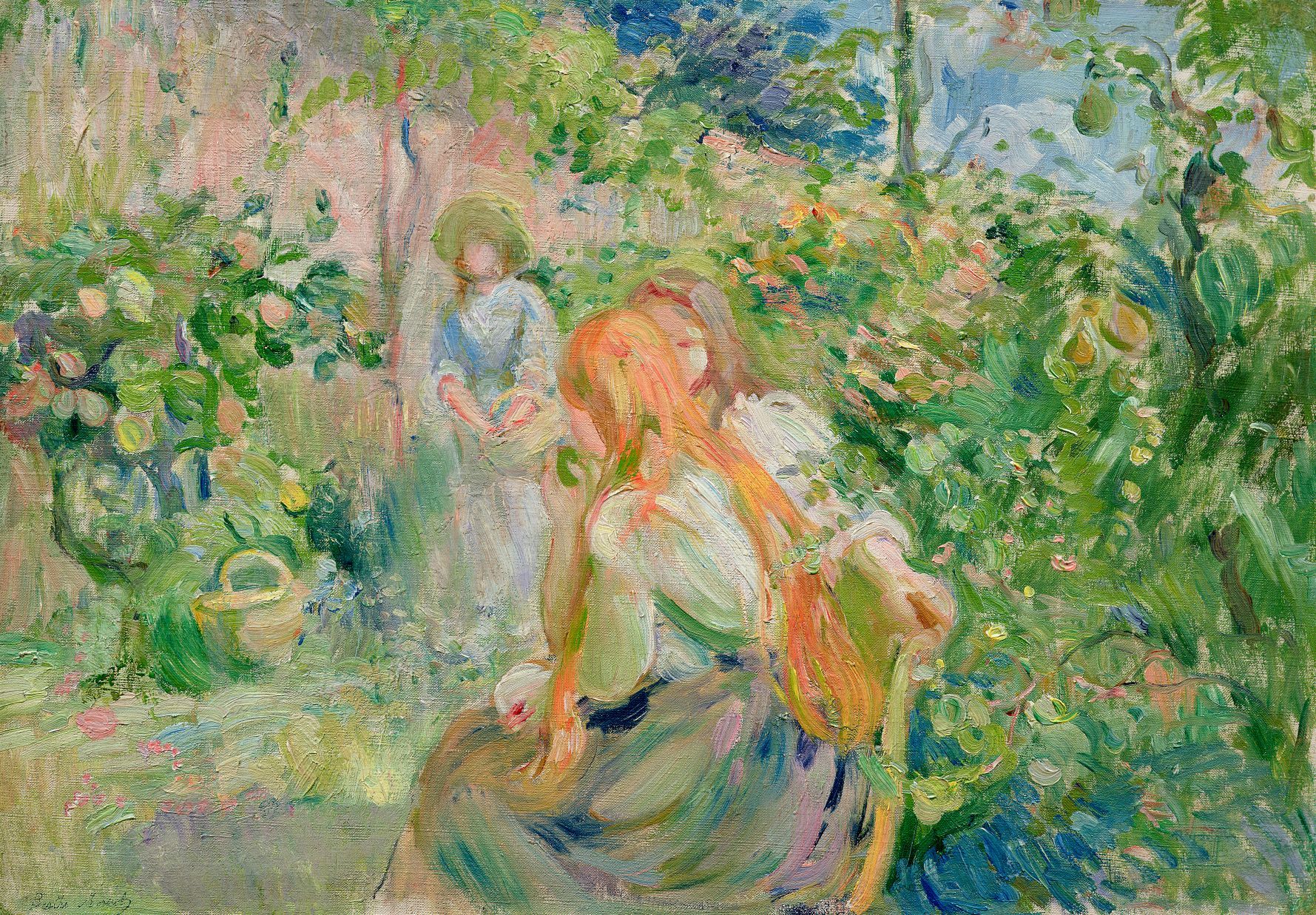
Dans Le jardin de Roche Plate – Berthe Morisot – © Bridgeman Images
Berthe Morisot painted a lot in the garden of Roche Plate, the house she rented on rue du Commerce:
“The garden is very pretty, […] in front of me, the alley flowered with white and pink roses, the alley lined with boxwood and behind the old moss-covered roof that we all painted”.
Berthe Morisot painted some twenty works during her stay in Portrieux.
Berthe Morisot, the Impressionist
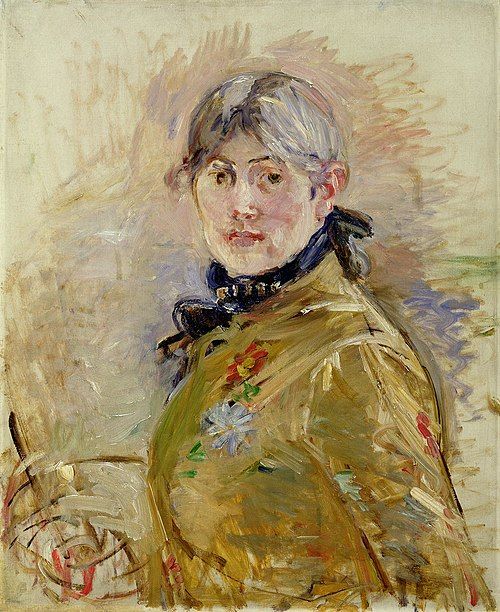
Autoportrait – Berthe Morisot – © musée Marmottan-Monet
Berthe Morisot was the only woman to join the Société anonyme des peintres, sculpteurs et graveurs, a group of avant-garde artists, and the only artist, along with Pissarro, to take part in every Impressionist exhibition from 1874 to 1886.
She had the means to finance the 1886 free exhibition project, and it was to her that the artists’ applications were submitted, which she studied with seriousness and integrity.
Works by the Divisionists Seurat, Pissaro and Signac were presented, but in a separate room.
Berthe Morisot mainly painted family scenes and portraits. Her daughter Julie was her best model. At her home, she welcomed painters who admired her work, including Degas, Caillebotte, Monet, Pissarro and Renoir, and poets such as Mallarmé, her friend who became her daughter Julie’s guardian on her husband’s death in 1892.
Despite 423 paintings, 240 watercolors, 191 pastels and over 200 drawings, Berthe. Morisot was not recognized in the masculine context of her time, and critics were not kind to her:
“I don’t believe there was ever a man treating a woman as an equal, and that’s all I would have asked. Because I know I’m worth it.
This artistic production is mainly bought by private collectors.
Somewhat neglected, Berthe Morisot’s work is being rediscovered thanks to exhibitions devoted to Impressionism (Musée d’Orsay 2019).
With their gentle play of light and delicate colors, her paintings have finally taken their rightful place.
